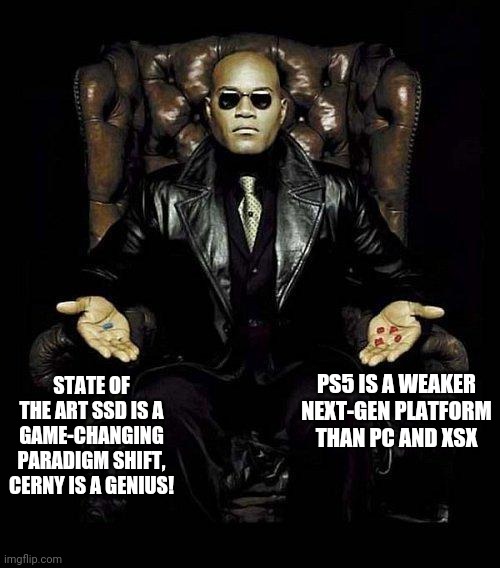Vognerful
Member
Thanks for the clarification but I never mentioned The Medium in my comparison because I know it doesn't run well on console or PC. But I made the point based on what games like spiderman, watch dog legions and others.I'm not sure if you've taken any interest in the topic of thread, but both Nanite, and the SW RT of lumen - which is the major advancement - is pixel-rate limited, so where your comparison for old PC and last-gen games - like the Medium - using HW RT will be better than a PS5 running them on those cards.
For UE5 where GPU clock matters and total ROPs matter, even a RTX 3060 TI with 80 ROPs and a 1500Mhz clock will be 30GigaPixels/s short of the PS5 for running those UE5 algorithms - even without optimization for cache scrubbing or the PS5's new power constant boost clock paradigm or IO. So I'm not sure that's safe advice looking ahead.
DLSS is ML guess work, and requires more developer effort akin to offline lightmap baking for work required, and isn't a silver bullet, so is a bit of a fudge if claiming superiority from scaling up native 600p(? or something low) to sort of look correct....
Going back to your comparison, 3060 ti is 133GPixel/s compared to 142 of PS5 (very slight difference). This is assuming all next games will utilize UE5. looking ahead on the subject of my comment, I am taking overall games in general as we know for example PS games do not utilize UE historically and no news on future projects. But I will keep in mind this point when looking for next GPU.
Second thing, I don't get why you took my comparison to old generation in a negative way when the ps5 GPU is constantly compared to AMD RX 5700 or Rx 5700 xt.
DLSS is ML guess work, and requires more developer effort akin to offline lightmap baking for work required, and isn't a silver bullet, so is a bit of a fudge if claiming superiority from scaling up native 600p(? or something low) to sort of look correct....
and for your comment regarding DLSS, whatever is needed from the developer to the consume to enhance the experience is required. your comment strike weird as I would believe as PS5 user that you would not use the same tone if a 3rd party developer would make similar comment about utilizing PS5 IO to reduce load time or having features on dualsense.









